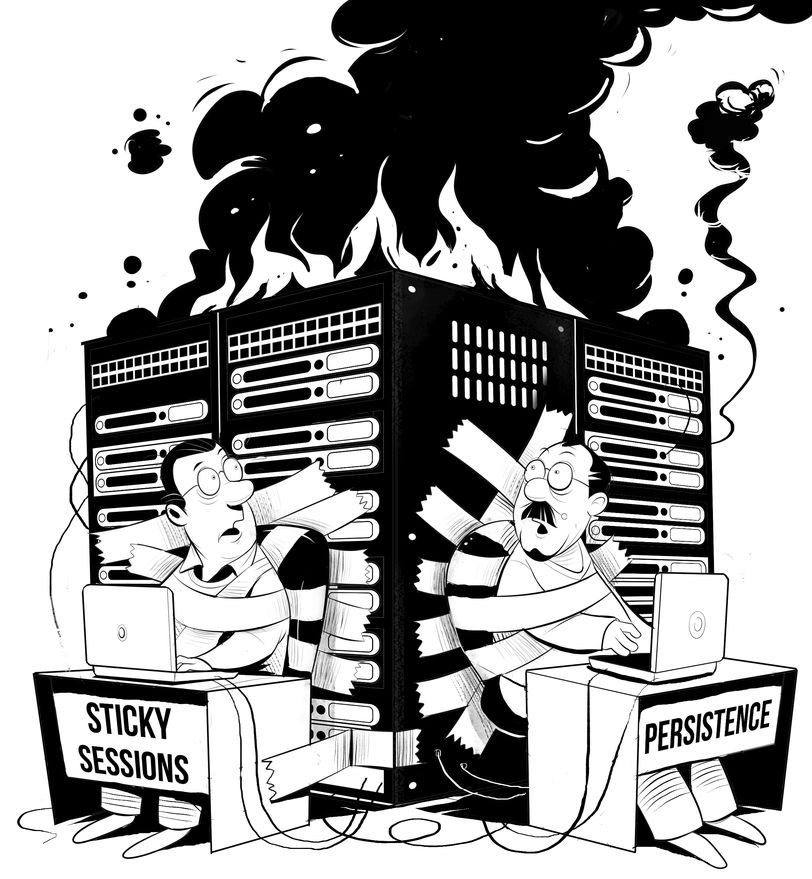Exchange 2013 is Microsoft's latest enterprise level messaging and collaboration server. It has been designed for simplicity of scale, hardware utilization, and failure isolation. This has greatly simplified both the deployment process and the implementation of a load balancer. Exchange 2013 has been consolidated into two roles, these are: the Client Access Server role and the Mailbox Server role. In Exchange Server 2013, there are two basic building blocks – the Client Access Array and the Database Availability Group (DAG). Each provides a unit of high availability and fault tolerance that are decoupled from one another. Multiple Client Access Servers make up the Client Access Array, while multiple Mailbox Servers form the DAG.
One of the main differences from Exchange 2010 is that all client connections are made using HTTPS. Outlook clients no longer use RPC to access their mailbox. This is now handled only by RPC over HTTPS (aka Outlook Anywhere). Native RPC is only used for server to sever communication.

Load balancing considerations:
Load Balancer Deployment Method
Exchange 2013 can be deployed using either Layer 4 or Layer 7 methods. At layer 4, either DR (Direct Return) or NAT mode can be used. Layer 7 utilizes SNAT mode.
One-arm layer 4 DR mode is the fastest option so where possible this is recommended. If this is not feasible for any reason – e.g. the Exchange Servers are located on a different subnet to the VIP, then two-arm layer 4 NAT mode is suggested as this also offers high performance. In situations where the network topology does not allow DR mode to be used (e.g. because VIPs & RIPs not located in different subnets) or NAT mode (e.g. because its not feasible to set the Exchange Servers default gateway to be the load balancer), layer 7 SNAT mode is suggested since the Exchange Servers can be positioned on any routeable network and no Exchange Server configuration changes are required.
Persistence (aka Server Affinity) Requirements
Due to Exchange 2013's new architecture, all sessions to the CAS servers are stateless and therefore persistence/affinity is no longer required on the load balancer.
Virtual Server/Service (VIP) Requirements
To provide load balancing and HA for Exchange, the following VIPs are required:
- HTTPS & HTTP (the HTTP VIP is only required for redirecting to HTTPS)
- SMTP
- IMAP4 (If used/required)
- POP3 (If used/required)
Port Requirements
The following table shows the port list that must be load balanced. Some services such as IMAP4 or POP3 may not be used in your environment.
| TCP Port | Role(s) | Uses |
|---|---|---|
| 25 | CAS | Inbound SMTP |
| 110 | CAS | POP3 clients |
| 143 | CAS | IMAP4 clients |
| 443 | CAS | HTTPS (Outlook Web App, AutoDiscovery, Web Services, ActiveSync, Outlook Anywhere, |
| Offline Address Book, Exchange Administration Center) | ||
| 993 | CAS | Secure IMAP4 clients |
| 995 | CAS | Secure POP3 clients |
Deployment Architecture

More Information
For more information please refer to our complete deployment guide available here.
BTW: Loadbalancer.org love the changes Microsoft have made for load balancing Exchange 2013.














